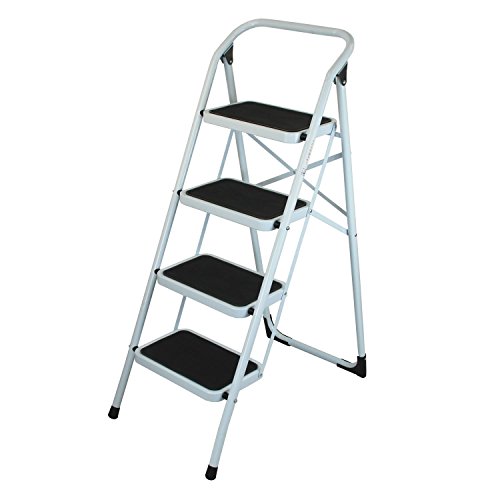Types of Ladder Materials: A Comprehensive Guide
When it comes to choosing a ladder, one of the key factors to consider is the material from which it is made. Different ladder materials offer unique strengths and weaknesses, making them suitable for different applications. In this article, we will explore the different types of ladder materials and their characteristics to help you make an informed decision.
Aluminum Ladders: Lightweight and Versatile
Aluminum ladders are a popular choice among homeowners and professionals alike due to their lightweight nature and versatility. They are easy to transport, making them ideal for tasks that require frequent ladder movements. Additionally, aluminum ladders do not rust, making them suitable for outdoor use.
One of the key advantages of aluminum ladders is their resistance to corrosion. This makes them an excellent choice for environments with high humidity or proximity to water, such as coastal areas or swimming pools. However, aluminum ladders may not be suitable for tasks involving electrical work, as aluminum is a conductor of electricity.
Fiberglass Ladders: Non-conductive and Durable
Fiberglass ladders are known for their non-conductive properties, which make them an excellent choice for tasks involving electrical work. Unlike aluminum ladders, fiberglass ladders do not conduct electricity, reducing the risk of electric shock. This makes fiberglass ladders a preferred choice for electricians and other professionals working with electrical systems.
In addition to their non-conductive properties, fiberglass ladders are also highly durable. They are resistant to weathering, chemicals, and impact, making them a long-lasting investment. However, fiberglass ladders are typically heavier than their aluminum counterparts, which may make them less suitable for tasks that require frequent ladder movements.
Steel Ladders: Strong and Sturdy
Steel ladders are known for their strength and durability. They can withstand heavy weights and offer exceptional stability, making them suitable for demanding tasks and industrial applications. Steel ladders are often used in construction sites, warehouses, and other environments where a high level of strength and stability is required.
While steel ladders offer excellent strength, they also tend to be heavier than other ladder materials, which may make them less suitable for tasks that require frequent repositioning. Additionally, steel ladders can rust if not properly maintained, so it is important to regularly inspect and treat them to prevent corrosion.
Wood Ladders: Traditional and Aesthetic
Wood ladders have a traditional and aesthetic appeal that makes them a popular choice for decorative purposes or historical restorations. They can add a touch of warmth and elegance to any setting, making them a preferred choice for libraries, boutiques, and other locations where aesthetics are important.
Wood ladders are typically made from hardwoods, such as oak or ash, which offer excellent strength and durability. However, they are not as lightweight as aluminum or fiberglass ladders and may require more frequent maintenance to prevent rotting or warping. Additionally, wood ladders are not suitable for tasks involving electrical work, as wood is a conductor of electricity.
Combination Ladders: Versatility at Its Finest
Combination ladders, also known as multi-purpose ladders, offer the versatility of multiple ladder types in one. They can be easily transformed into various configurations, including step ladders, extension ladders, and scaffold platforms, making them a highly versatile option for a wide range of tasks.
Combination ladders are typically made from aluminum or fiberglass, combining the lightweight nature of aluminum with the non-conductive properties of fiberglass. This makes them suitable for both indoor and outdoor applications, as well as tasks involving electrical systems. However, it is important to ensure that the ladder is properly locked into the desired configuration before use to prevent accidents.
Choosing the right ladder material is crucial to ensure safety and effectiveness in various applications. Aluminum ladders are lightweight and versatile, fiberglass ladders offer non-conductive properties, steel ladders provide strength and sturdiness, wood ladders add a traditional aesthetic, and combination ladders offer versatility at its finest. By understanding the unique characteristics of each ladder material, you can make an informed decision that best suits your needs and requirements.






